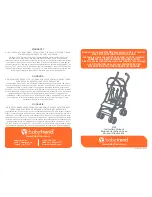
40
Section 3 Operation
General
After the device has been properly installed in the process, it is ready for
operation. When initiating flow, slowly open any upstream shutoff valve to
avoid a flow surge. A bypass is helpful in bringing the flow on smoothly.
Avoid starting a pump to supply the device without the use of a valve
upstream of the device.
Theory of Operation for Flow Measurement
The thermal mass flow measurement system consists of two components:
the restrictor or bypass and the flow sensor. Figure 3-1 is diagram of the
flow stream through the device, with an enlarged view of the flow sensor.
Gas flow entering the device is separated into two paths; one straight
through the restrictor and the other through the flow sensor. This is
represented in Figure 3-1, where the total flow A+B enters the device and
is separated into streams A and B. The streams are joined again at the far
side of the restrictor.
The separation of the flow streams is caused by the restrictor. During flow
conditions, there will be a pressure differential across the restrictor that
forces gas to flow in the sensor.
The pressure difference caused by the restrictor varies linearly with total
flow rate. The sensor has the same linear pressure difference versus flow
relationship. The ratio of sensor flow to the flow through the restrictor
remains constant over the range of the device (A/B = constant). The full
scale flow rate of the device is established by selecting a restrictor with the
correct pressure differential for the desired flow.
The flow sensor is a very narrow, thin-walled Hastelloy tube. Onto this
tube are built upstream and downstream temperature sensing and heating
elements. During no-flow conditions, the amount of heat reaching each
temperature sensor is equal, so temperatures T1 and T2 (Figure 3-1) are
equal. Gas flowing through the tube carries heat away from the upstream
temperature sensor and toward the downstream sensor. The temperature
difference, T2 – T1, is directly proportional to the gas mass flow.
GF100 Series operating principles are described in Figure 3-1.
















































